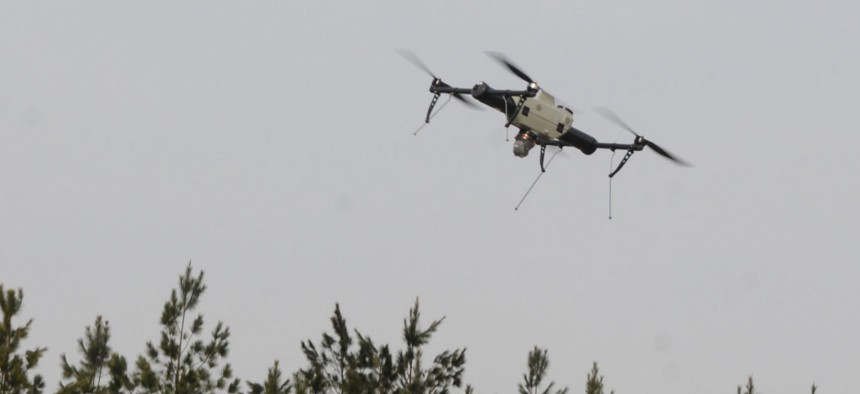DARPA wants air traffic control for low-flying drones
The Aerial Dragnet program calls for identifying and tracking UAS flying below 1,000 feet in urban areas where line-of-sight is not available.
Military commanders don’t have to see a high-flying plane or unmanned aerial system to know where it is. The military equivalent of the air traffic control system lets them know its location and direction. The same goes for smaller, mid-altitude planes.
But when aircraft, particularly UAS, are flying below 1,000 feet, it becomes a problem, especially in crowded urban areas. Systems are being developed for track low-flying drones over open terrain, but those require line-of-sight. The Defense Advanced Research Projects Agency wants to be able to know where drones are when they can’t be seen.
“We want a similar capability [to air traffic control] for identifying and tracking slower, low-flying unmanned aerial systems, particularly in urban environments,” DARPA program manager Jeff Krolik said in a release.
The research agency has launched a program called Aerial Dragnet that aims to develop non-line-of-sight, NLOS, methods for identifying and tracking UAS regardless of physical obstructions.
One possibility is setting up a network of surveillance nodes mounted on tethered or long-endurance UAS, although the agency is open to other ideas, such as new sensors that can see around or through buildings. The goal is to produce a common operating picture of the low-altitude skies in an urban environment that is continually updated. It also should be scalable and fairly inexpensive, using low-cost sensors, the drones it would track are fairly cheap, and a large financial output wouldn’t be justified. Other details of the plan are outlined in a Broad Agency Announcement issued this week. A Proposer’s Day is set for Sept. 26.
Small UAS have steady become a big deal for the military. The Army, for instance, has a number of projects in the works. Just a few of them: testing swarms of small drones, only to explore how they could be used but also to test how they could be defended against; prototyping a relatively large, but low-flying, quadcopter for battlefield resupply missions; and a new UAS that could be used to supply commanders with ISR information during combat operations.
Defending against small drones also is a big concern, since adversaries could use the inexpensive aircraft for ISR or even as flying IEDs.
DARPA is expecting that Aerial Dragnet could produce technological benefits beyond protecting troops in the field. Considering how popular drone are becoming within U.S. borders, researcher say Aerial Dragnet technology also could be applied to a low-altitude air traffic control system domestically.




